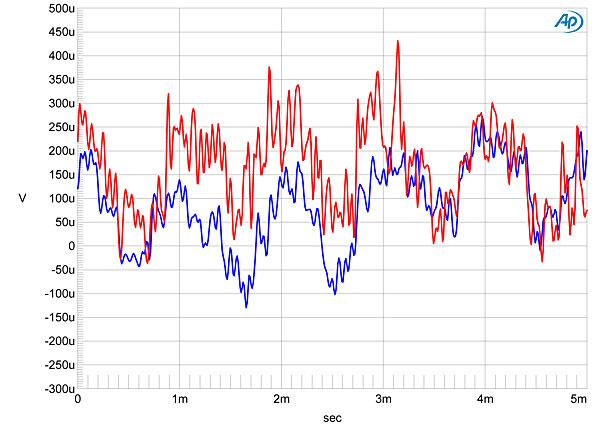Sampling resolution plays a big part in minimizing the quantization noise. The smoother the quantized signal, the lesser the noise. Now in the case of red book which is stored as 44 khz/16 bits, upsampling of DACs is supposed to increase the result sampling rate, for example from 44 khz to 192 khz. This is being done via various techniques and algorithm. How effective this upsampling algorithms and techniques remains to be debatable. In essence upsampling devices are just performing intelligent interpolation to improve the resolution of the quantized signal. The smoother the quantized signal, the smoother the output analog signal (remember the smooth input sine wave).
There are a few points that I'd like to add:
1. The input wave before sampling is almost never perfectly smooth, so even the perfect interpolation filter cannot recover what was lost in sampling. Upsampling will never gain back lost resolution, and errors from requantization can actually diminish quality somewhat before the conversion to analogue happens. Selecting the right filter for the job is also difficult, as what may be great at 20kHz may do a terrible job at 1kHz. Makers generally select a safe algorithm to minimize damage to the signal, and this means that interpolation largely only benefits the upper frequency ranges.
Here's a DAC output plot from an upsampled redbook signal (1kHz sinewave):

Here's the output of the same DAC fed with a high resolution signal (1kHz sinewave):

2. Upsampling with interpolation is performed to diminish the errors/losses in digital to analog conversion, and not to "improve" the source. This gives the converter more data points for a possibly more consistent/predictable output.
Here's an example of what can happen if we don't keep a tight digital leash on a DAC (redbook 1kHz sinewave through NOS DAC):

This is a far less consistent output, but is closer to what vinyl fans are used to (due to manufacturing tolerances and deterioration). This is why some people say that NOS DACs sound more "analogue" to them.
3. The only absolute advantage of upsampling is the very same advantage of oversampling. It is shifting temporal aliasing to a region where it can be easily managed with simple filters (which thus minimizes damage to the usable part of the output -- reducing top end roll off and phase shift).
If implemented properly, upsampling can improve the performance of a CD player. However, it can never improve the quality of the source -- the device is limited by the sampling rate and the sampling resolution of its data feed.